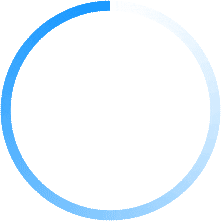Report Coverage
This report focuses on genomics, one of several industries identified by Who Owns Whom for its series of Global Disruptor reports. This report includes information on what genomics entails, companies and institutions involved in the sector, and the uses of genomics for humans, to help prevent and fight disease, and for agriculture. It includes information on gene sequencing, bioinformatics, genome mining and editing, trends, regulations and ethical concerns. It provides an initial outlook on a sector that still in its early stages of development, but likely to be a major drive of change in the future.
Introduction
Genomics is the study of a genome and its environment. A genome is all the DNA contained in a single cell, which means it is the set of instructions needed to create an organism. Humans have one copy of their genome in nearly every cell in their bodies.Each human’s genome is around 99.8% identical to that of every other human being. The 0.2% variation is the foundation of genomics. Understanding this variation can help in the prediction, diagnosis and treatment of disease.The field of genomics owes its existence to the Human Genome Project which kicked off in 1990. This was a collaborative, international effort in which researchers sequenced the bases in our genome’s DNA, mapped the locations of genes for major sections of our chromosomes and produced linkage maps that track inherited traits (such as those for genetic disease) over generations.
Strengths
• A comprehensive, public database that contains over six trillion base pairs.
• Capital available for companies provided there are attractive returns attached to the business model.
• Genomics pursues the advancement of humanity from healthcare and food security perspectives, so it should enjoy continued support globally.
• Significant funding and operational assistance from academic and health institutions assists with ongoing research.
• The global response to COVID-19 has thrust this industry into the spotlight.
Weaknesses
• Absence of sufficient funding for development of high-throughput genomic software tools and other projects that may not have sufficiently attractive potential returns.
• Certain applications may have insurmountable ethical challenges.
• Lack of infrastructure to maintain, store and share sensitive genomic data.
• Lack of well-defined standards and common data formats for integration of data and data complexity concerns.
• Many of the companies are early-stage and loss-making.
• Poor ordering and simplification of data in clinical practice.
Opportunities
• A landmark breakthrough, such as early detection and prevention of cancers, would carry exceptional economic and social value.
• Advancing precision medicine with blockchain-powered artificial intelligence and deep learning algorithms.
• An expanding and increasingly globalised population is a breeding ground for viruses and other health threats, which may unlock further opportunities.
• Increased population engagement and data management.
• Rising demand for nucleic acid and protein sequencing.
• Technological advancements in sample preparation for population sequencing.
Threats
• Access to private capital may diminish if business model economics do not improve as expected.
• Off-target effects in clinical practice may delay or remove demand for services if they cannot be improved to an acceptable level.
• Protection of patient information requires strong data protection controls, and failure to safeguard data could lead to lawsuits.
• Regulatory, legal and ethical questions around what should be owned privately or publicly in the interests of humanity.
• Skills shortage in clinical practice.
Outlook
The field of genomics is still in its relative infancy and remains highly speculative in the private sector. It has benefitted from capital inflows during a period in the market of exceptionally positive sentiment towards disruptive technologies. As stimulus in the US has waned and inflation has increased, valuations of genomics companies have pulled back considerably. This doesn’t necessarily imply that they will struggle to raise capital in the market.As the global population grows and life expectancy increases, demand for advanced healthcare will increase. One of the challenges will be in addressing this demand, as there is a skills shortage in bioinformatics. Efficiency gains in technologies should help to close this gap and unlock new applications for genomics.Going forward, breakthroughs are likely to continue being met by ethical and regulatory hurdles. Consumer demand for treatments of cancers and genetic disorders will drive a need to manage these hurdles in the advancement of humanity.
Full Report
R 1 900.00(ZAR) estimated $106.86 (USD)*
Table of Contents
[ Close ]| PAGE | ||
|---|---|---|
| 1. | INTRODUCTION | 1 |
| 2. | DESCRIPTION OF THE INDUSTRY | 2 |
| 2.1. | The Human Genome Project | 2 |
| 2.2. | Functional genomics | 4 |
| 2.3. | Structural genomics | 4 |
| 2.4. | Other | 5 |
| 3. | SIZE OF THE INDUSTRY | 7 |
| 3.1. | Large-scale sequencing | 7 |
| 3.2. | Bioinformatics | 11 |
| 3.3. | Genome mining | 14 |
| 3.4. | Genome editing | 15 |
| 3.5. | Other | 17 |
| 4. | STATE OF THE INDUSTRY | 19 |
| 4.1. | Key Trends | 19 |
| 5. | INFLUENCING FACTORS | 20 |
| 5.1. | Regulations | 20 |
| 5.2. | Ethical Concerns | 22 |
| 6. | SWOT ANALYSIS | 23 |
| 7. | OUTLOOK | 25 |
| 8. | REFERENCES | 25 |
| Appendix | 27 | |
| Summary of notable players | 27 |



